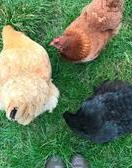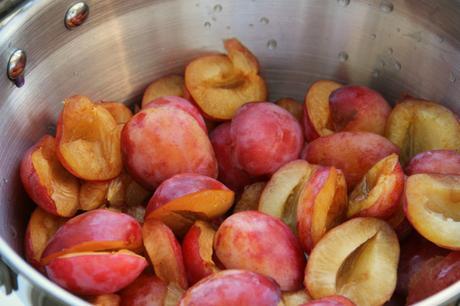
It was time to relieve our Victoria plum tree of its heavy branches of fruit, so I set about picking lots of gorgeous plums over the bank holiday weekend to make jam. Most of the plums were indeed lovely, but some were harbouring plum moth larvae who are quite partial to Victoria and Czar varieties.
If you found this blog post searching for a scrummy plum jam recipe, I apologize if the following photos of plum moth larvae puts you off the very idea, however I decided the photos might be beneficial to some (especially those who have no idea what they’ve just found lurking inside their plums!).
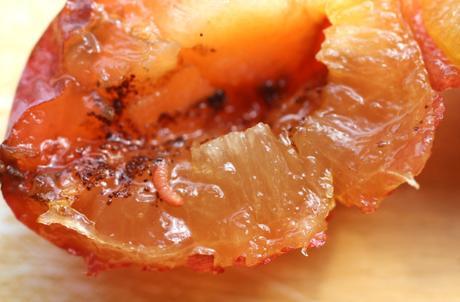
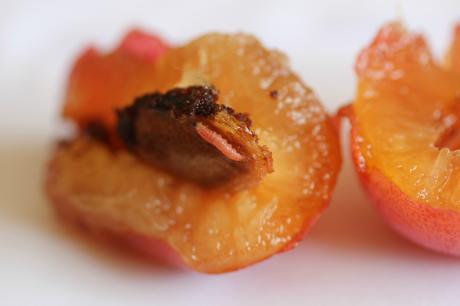
So there we are, plum moth caterpillars clearly enjoying our plums. Brown poops (frass) are usually the first thing you’ll see when you slice open a plum troubled with plum moth, the adult moth lays eggs on the fruits in summer and the pink caterpillars burrow in and have a jolly good time eating, pooping and growing. The fruit drops to the floor earlier than usual and this is where the next cycle of life begins.
I’m an organic veg gardener. I don’t spray my fruit trees or anything else with nasty chemicals and I like to think I’m pretty tolerant with a live and let live attitude to most things, but let’s face it, nobody wants caterpillars (or their poops) to end up in a jam jar, so I hope my photos help with identification of a plum problem that may crop up from time to time.
To keep plum moth under some sort of control (organically) I collect fallen fruit regularly from directly under the tree and pile the fruit elsewhere in the garden, allowing the chickens to enjoy them as they free range. The local wood pigeon population enjoy a nibble, late butterflies and pollinators such as bees and wasps appreciate the sugary boost as the weather turns cooler.
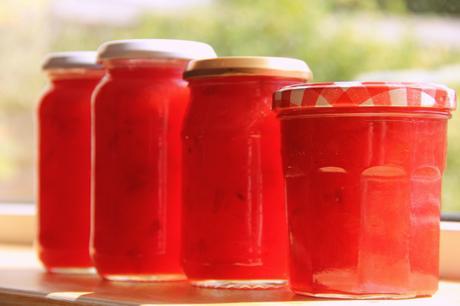
If I haven’t lost you to the icky larvae photos and you’re still here looking for that plum recipe, here it is. I assure you it’s rather nice.
Makes 6 -8 jars depending on size
1.5kg plums
1.25kg granulated sugar
Slice the plums in half and remove stones, place plums into a preserving pan with 400ml water, bring to a simmer and cook on a gentle heat for around 20 minutes until the fruit is tender and skins soften.
Add the sugar and stir to dissolve, bring to boiling point and boil rapidly for approximately 8 – 10 minutes, test for setting point at regular intervals to avoid burning the jam. Once setting point is reached, pot the jam and place lids on.
Filed under: Fruit Garden, Pests & Diseases, Recipes Tagged: plum jam recipe, plum moth, plum moth larvae, plum pest, problem with plums
